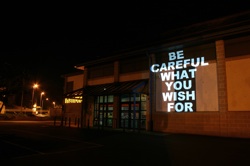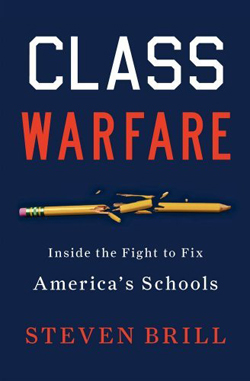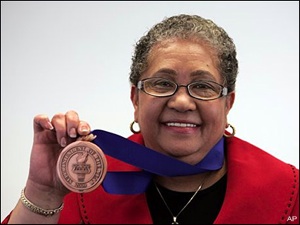Share this with your friends on Facebook
The phrase “conventional wisdom” is often an oxymoron, at least in education. At a bare minimum, conventional wisdom ought to be questioned. Which is what I propose to do here about ‘Time on Task’ and the new Common Core standards.
‘Time On Task’ is a concept educators love to talk about. It often goes this way: someone asks about extending the school day and/or the school year, prompting this response: “Good idea, because more time on task produces academic gains.”
Odds are good that what comes next is an emphatic statement about the importance of quality time on task — which strikes me as akin to supporting motherhood and apple pie.
Everyone nods approvingly at this conventional wisdom.
But they have it backwards. It’s not ‘quality time’ that matters so much. It’s ‘quality tasks.’ Anyone who’s spent much time in high school lately knows that much of what goes on there is mind-numbing. It’s the tasks, not the time, that ought to take precedence.
You may have read my earlier comments about creating knowledge, so I won’t rehash them here, except to say that teachers have remarkable opportunities to work with young people on tasks that build their skills and knowledge, tasks that challenge their creativity, and tasks that help them sort through the flood of information that surrounds them 24/7 and turn it into knowledge.
So it’s not ‘quality time on task’ that we should be talking about. Instead, it’s ‘Time on Quality Tasks.’ See that the tasks are meaningful, and we won’t have to worry about time — most students will want to complete quality tasks.
The second example of conventional wisdom that ought to be scrutinized involves the Common Core (national) standards for math and English, which have now been endorsed/adopted by 45 states. Bandwagons in general scare me, and the Common Core bandwagon is moving at high speed, endorsed not just by most states but also by teacher unions and many other education associations. Education Secretary Arne Duncan and I talked about it at our Twitter Town Hall this past Monday, and he was lavish in his praise, while taking extreme care to point out that the federal government had not written these standards.
(However, his Department of Education has thrown a lot of money at this and also made acceptance of ‘higher standards’ one of the four requirements for qualifying for its “Race to the Top” competition. Not that there’s anything wrong with that…)

The Common Core will be a game-changer, the Secretary asserted. Perhaps they will be, but I have to wonder how many people have actually read them? (The PDFs, available for download at the site linked in the first paragraph above, are quite lengthy.)
One thing is clear: What we have now in public education is unacceptable. It’s a hodgepodge of standards, many quite low because of the ‘dumbing down’ effects of No Child Left Behind. As Robert Rothman makes clear in his valuable new book, Something in Common, America has been wrestling with this issue for years. So I am not arguing for the status quo. However, I am afraid that we are missing an opportunity to re-examine our 19th Century approach to school organization. Let me explain.
Because I taught English in high school and college at the beginning of my career, I have been poking around in the ELA standards (English Language Arts). They are very detailed, by year, and ‘strand’ and category. So be prepared to crack the code, ‘Rl.5.4,’ ‘Rl.9.10.10,’ and so on.
On the subject of ‘Range of reading and level of text complexity,’ by the end of the year, fifth graders are expected to “read and comprehend informational texts, including history/social studies, science, and technical texts, at the high end of the grades 4–5 text complexity band independently and proficiently.”
Before you say ‘huh’, read on.
In that same category, this is what’s expected of 9th graders: “By the end of grade 9, read and comprehend literature, including stories, dramas, and poems, in the grades 9–10 text complexity band proficiently, with scaffolding as needed at the high end of the range.”
“Scaffolding” is educational jargon. Think building blocks. First you learn to add and subtract, then you build on that scaffold and learn to multiply and divide, that sort of thing. An awful lot of learning does NOT occur that way, but that’s probably beside the point here.
Leaving aside the mind-numbing jargon that makes my eyes glaze over, I have a serious issue with the Common Core and the conventional wisdom that these detailed national standards are just what we need. They are pouring concrete around our antiquated, age-segregated approach to learning. Just when modern technologies allow students to move at individual and different speeds, the Common Core standards seem to set in concrete the notions of 5th grade, 6th grade, 7th grade, and so on.
I worry that these markers will become stop signs, just as the grade demarcations now operate. Not long ago I heard a school principal complain that he had to tell his 9th graders to ‘motor down’ to get ready for the 9th grade test — because they were doing 11th grade math. All they will get credit for, naturally, is the 9th grade. Isn’t “Slow Down!” a horrible lesson about the irrationality of the world for those young people to absorb?
Schools work around age segregation by creating programs for ‘the gifted,’ which allow precocious 9-year-olds to do work that’s usually for older kids. Sometimes kids skip a grade, but no one seems to question age- and grade-segregation.
I want to be clear here. I am not arguing for ‘fewer standards,’ something the writers seemed to have anticipated, because they write, “It is important to recognize that ‘fewer standards’ are no substitute for focused standards. Achieving “fewer standards” would be easy to do by resorting to broad, general statements. Instead, these Standards aim for clarity and specificity.”
‘Specificity’ they’ve achieved, but ‘clarity?’ Re-read the excerpts quoted above.
I have a suggestion. Rather than perpetuate grade-based learning, could we set standards for age groups? Standards for children ages 6-10 that say, ‘This is what every 10-year-old is expected to be able to do.’ Standards for kids ages 11-14 that say ‘This is what every 14-year-old is expected to be able to do.’ And graduation standards for those ages 15-18: ‘This is what every HS senior is expected to be able to do before getting a diploma.’ Then our system could actually be learner-centered.
Is that a pipe dream? What do you think?








